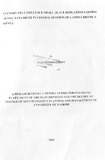| dc.description.abstract | Climate change and the rapid increase of population have been thought to be responsible for the constant food shortage experienced worldwide and particularly in the developing nations. In fact, in the recent years, prices of foodstuff in the world market have skyrocketed. In Kenya, the problem of food shortage continues to manifest itself especially in the ASALsᄋ that account for more than 80 % of Kenya's landmass.
In North, Eastern region, and Garissa particularly, the government and other stakeholders have been forced to continuously supply relief food to its population. Irrigation has for long been deemed as one way of meeting food sufficiency as opposed to rainfed agriculture. However,even though the Kenyan government has invested in public LSISs, the result has not been encouraging. Likewise, the irrigation potential is high, investment in this area is still wanting. Of late, the Kenyan government as a policy has been encouraging and supporting entrepreneurs to invest in commercial SSISs in the hope that they would contribute solutions towards food sufficiency because they enjoy communal support and ownership.
Inigation farming can be seen as a business venture, but interestingly, cntrepreneur5 have not invested much in this area as expected. This study was undertaken in Central Division of Garissa District and sought to examine the factors that influence small-scale irrigation farming so asto understand what influences their initiation, operation and problems faced by small-scale irrigation farmers and their deemed solutions. The socio-psychological, economic, technical and environmental factors were investigated to see how they influence small-scale irrigation farming in Garissa District.
The study was carried out among 120 farmers in central division of Garissa District using the non-probability sampling, particularly purposive sampling. The data was analysed using the SPSS. The data is presented in frequency and table forms. The study findings indicate that sociolygical. factors like gender, age and social status influence. SSI farming in Garissa. Economic factors like availability of funds, access to credit facilities, infrastructure, and availability of land also affect SSI farming in Garissa. Results show that farmers lack relevant and timely agricultural information and training, thus negatively influencing SSI farming. | en_US |

